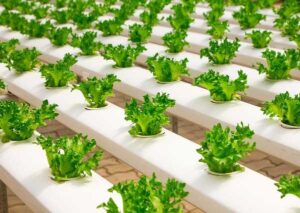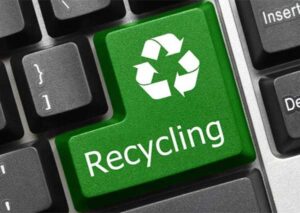There is no way to adequately thank the men and women who sacrificed so much for our freedom and safety. But we can offer them a second chance – an opportunity to be successful members of a supportive community! The staff and volunteers at Rumshock Veterans Foundation are working to do all we can to offer veterans the opportunity to improve their physical, mental, and emotional health as well as reconnect with society through meaningful activities. There are four components to the Foundation’s sustainable program: 1) Victory Village, a tiny residential community of affordable homes for veterans; 2) Hydroponic Farming, maintained by Village residents; 3) Victory Transportation, to assist Village residents in making appointments to healthcare providers and other necessities; and 4) E-Waste Recycling, involving the recovery of materials to be used in future production.
 A. Victory Village
A. Victory Village
Victory Village is a custom-building project, that’s the first master-planned tiny house community, on 75 acres. The pint-sized village initially consisting of six dwellings with private backyards will cater to ecologically aware small space veteran dwellers. Edible herb landscaping, on-site farmers market and production facility as well as a glorious urban garden are just some of the green amenities that are planned. All homes will include energy-saving features for reducing the community’s overall footprint including solar power and water reclamation.
View what Suffern High School Students in the Interior Design class presented to Rumshock as interior concepts for Victory Village:
 B. Victory Transportation
B. Victory Transportation
Transportation Service will be available to veterans without their own cars. There will be two vehicles (1 ADA accessible van, 1 full size pick up). They will both be used as general purpose vehicles within the village and outside the village. Vegetable deliveries from the Hydroponic Farm will also be managed through Village Transportation.
The Village Transportation will share space within the Warehouse/Multi-purpose building. Inside this space will be a 3-bay garage for maintenance on our vehicles as well as space for veterans to repair their cars as part of the maker space concept. Two fully equipped sets of tools will be available for the veterans to use. Two qualified veterans from Victory Village will be assigned as drivers
 C. Hydroponic Farming
C. Hydroponic Farming
A valuable lifestyle for veterans and high-functioning members of the special needs community that provides sustainable employment in a scalable hydroponic containerized farming system. This enables them to obtain meaningful engagement with team members, essential to fostering mental health and well-being, while growing organic greens and herbs for consumers who prefer a nutritious, traceable, and local food source.
- Veterans learn farming as a sustainable life-style
- Mentor opportunities
- Job skills training & employment
- Reliable revenue stream for Victory Village from long-term purchase agreements with organizations, institutions, and other groups
 D. E-Waste Recycling
D. E-Waste Recycling
Our main space in the warehouse will be used for this program. We will take donated items and break them down to resale for revenue. The Foundation’s vehicles will also be used to transport items for this program. This program will require 1-2 veterans who will also live in the village. The Electronic Waste Recycling program, mandated by NY State Law (NYS Electronic Equipment Recycling and Reuse Act (Environmental Conservation Law, Article 27, Title 26)can be expanded without increased cost’ just credits given to the vets working there.
E-waste is the informal name given to those electronic products that are nearing the end of their “useful life” and about to be thrown into the trash. The most popular types of electronic products that are thrown out include: computers, televisions, smartphones, tablets, copiers, fax machines, and speakers. It’s important to note that in order to minimize the environmental impact of e-waste, you should instead try to reuse, refurbish, or recycle your electronic products. Keep in mind that e-waste is not only harmful to the environment, with an EPA estimated 60 million metric tons entering landfills each year, but the waste also represents a lost economic opportunity. In fact, many of the product’s components can be sold or recycled to create new devices. The latter two actions can not only generate income, but they help to reduce the negative environmental impact of e-waste that is not disposed of properly.
The following 10 reasons from Compucycle.com can help understand why consumers should make a diligent effort to properly dispose of electronics.
- E-Waste Contains High Levels of Precious Metals
Electronic waste contains precious metals that are estimated at a 40 to 50 time richer value than the ores that are mined from the Earth. Unfortunately, when electronics are simply thrown away, the majority of these precious metals are lost. For example, it is estimated that only 10 – 15 percent of the gold found in e-waste is recovered for reuse, recycling, or resale. Properly recycling and disposing of e-waste can increase the percentage of precious metals that are successfully recovered from outdated electronics. - E-Waste Contains Toxic Substances
It’s no secret that e-waste contains toxic substances; however, far too many people think that throwing away a small amount isn’t harmful to the environment. The truth of the matter is that many electronic devices contain chromium, cadmium, mercury, lead, and other heavy metals that can harm the environment in almost any sized quantity. The toxins that are emitted from improperly disposed of e-waste can contaminate the water, soil, and air. Additionally the harmful toxins can cause reproductive disorders, cancer, endocrine disruption, and other serious health issues. - Prevent International Movement, Contamination, and Exploitation
The uncontrolled movement of e-waste has resulted in heightened levels of global contamination. Additionally, a large portion of e-waste is moved (unbeknownst to the average consumer) to third world countries where cheap labor and primitive disposal approaches increases the aforementioned health risks to local residents. Additionally, when e-waste is broken down into scrap in developing countries, workers are often exposed to dangerous life-threatening fumes. - Recycling E-Waste Can Cut Greenhouse Gas Levels
Did you know that if more electronics are recycled, then less will need to be produced, and greenhouse gas levels can be greatly reduced? As seen through the Extended Producer Responsibility (EPR) model, manufacturers are encouraged and even rewarded for building better, longer lasting products, that can more easily be upgraded or recycled. In this vein, if consumers are educated about how to reuse or recycle their electronics, then not only can they enjoy the economic rewards, but a positive environmental impact can be enjoyed by current and future generations. - EPR Model Can Lead to Innovative Technology
As noted in reason number four, the EPR model can also benefit consumers. In fact, when manufacturers focus on raising their technological standards, then they can create better electronic products for the consumer. Consumers, in return, can enjoy the monetary benefits of electronics that can more easily be upgraded, instead of the financial burden of devices that must constantly be replaced due to new software releases, product launches, or hardware changes. - EPR Model Can Create Fairer Consumption Costs
In addition to the environmental and consumer benefits, the EPR also creates a model for fairer consumption costs. In layman’s terms, if the manufacturers and sellers include the cost of recycling into the product, then the consumers purchasing the products will inevitably pay for its safe disposal. In the latter model, non-consumers are saved from paying safe disposal costs via added taxation. - Saves Landfill Space
It’s no secret that e-waste takes up a large portion of landfills. In fact, a recent EPA study found that each year an estimated 60 million metric tons of e-waste is thrown into landfills throughout the globe. Implementing recycling best practices can greatly reduce this figure and subsequently have a positive environmental impact for current and future generations. - Green Job Creation
The beauty of recycling e-waste is that it can create more jobs, especially in the low income areas where many of the recycling plants are located. Creating more e-waste recycling jobs not only means that more people will be employed throughout the year; but, it also means that more tons of e-waste can be properly sorted, recycled, reused, and inevitably disposed of properly each year. - Data Security and Identity Theft
Did you know that consumers who simply throw away their electronic devices are more likely to experience data security breaches or have their identities stolen? A large portion of e-waste is generated from devices that are functioning but outdated. Whenever you are disposing of electronics that are still functioning, you need to ensure that you have properly cleared all of your personal information from the device. - State Requirements
While there is currently no federal law that states e-waste shouldn’t be shipped abroad or thrown into landfills, there are 28 state laws, including New York, that have placed a ban on e-waste in landfills. According to NY State Law, An “electronic waste recycling facility” is a facility at which the materials, components or commodities contained in electronic waste are separated, dismantled or processed for the purpose of preparing the materials, components or commodities for use or reuse in new products or components thereof, but not for energy recovery or energy generation by means of combustion, gasification, pyrolysis or other means. Recycling includes the manual and mechanical separation of electronic waste to recover materials, components or commodities for the purpose of reuse or recycling, and changing the physical or chemical composition of electronic waste to segregate components for purposes of recycling those components.
